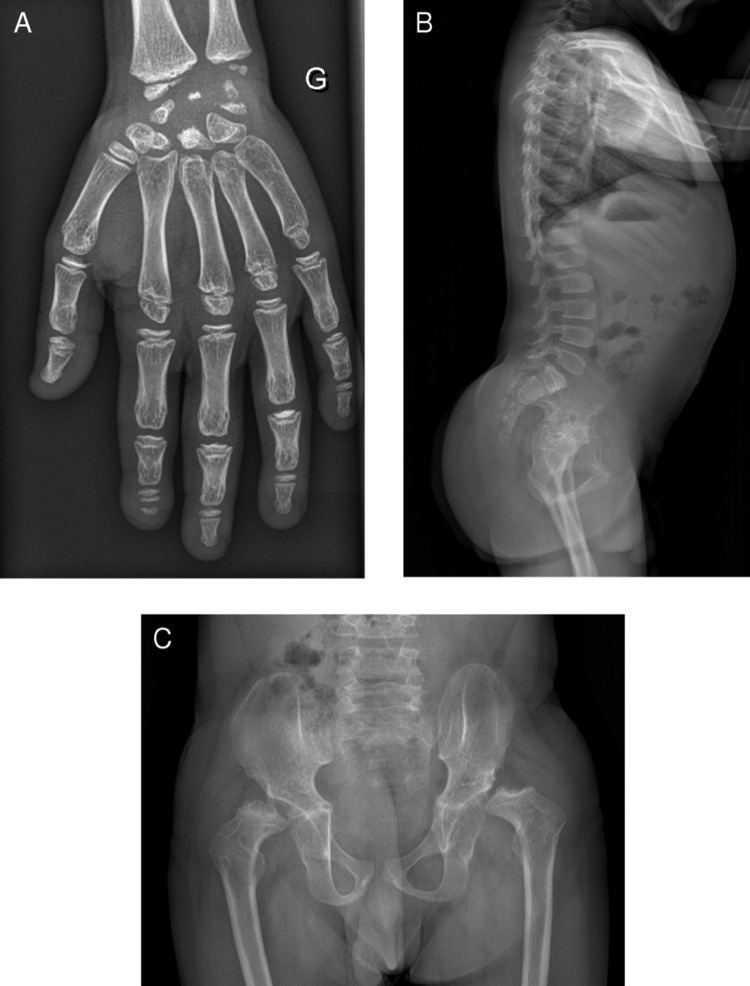OMIM 226980 | ||
 | ||
Wolcott–Rallison syndrome, WRS, is a rare, autosomal recessive disorder with infancy-onset diabetes mellitus, multiple epiphyseal dysplasia, osteopenia, mental retardation or developmental delay, and hepatic and renal dysfunction as main clinical findings. Patients with WRS have mutations in the EIF2AK3 gene, which encodes the pancreatic eukaryotic translation initiation factor 2-alpha kinase 3.
Contents
Other disease names include multiple epiphyseal dysplasia and early-onset diabetes mellitus. Most patients do not survive to adult hood with this disease. The majority of these WRS patients die from fulminant hepatitis during childhood. There are few reported cases for this disease. Of the 54 families worldwide with reported cases of WRS, 22.2% of them are from the Kingdom of Saudi Arabia. Of the 23 WRS patients in Saudi Arabia, all but one is the result of consanguineous marriages. Another country where WRS cases have been found is Kosovo. Here, the Albanian population is also known for consanguineous marriages, but there were some cases involving patients from non-consanguineous parents that were carriers for the same mutant allele.
Genetics
The main focus for this autosomal recessive disease is mutations to the EIF2AK3 gene. This gene is located on chromosome 2 p11.2. In unrelated families, different mutations have been observed in the EIF2AK3 gene, including missense and nonsense mutations. For some cases for unrelated families, identical mutations were observed, although these cases are rare.
The EIKF2AK3 gene codes for PERK (pancreatic endoplasmic reticulum kinase), an explanation for the spectrum symptoms. PERK is associated with the activity of beta cells in the pancreas. Beta cells are needed for the proper release of insulin into the blood stream after an increase in blood glucose. This kinase is needed for the control of protein levels in the endoplasmic reticulum and is linked to ribosome activity. The endoplasmic reticulum is a major protein sorting and processing center in every cell of the body. A broad range of bodily systems is affected because of the lack of post-translational modifications of to proteins. These proteins are coming from the endoplasmic reticulum can be in the cells of the various organ systems effected, such as urinary and central nervous system. EIKF2AK3 is also involved in bone cells. This is part of the reason why patients suffer from multiple epiphyseal dysplasia and osteopenia.
Symptoms and Diagnosis
Initially, patients with neonatal or early-childhood onset diabetes are possible candidates for having Wolcott–Rallison syndrome. The other symptoms include the multiple epiphyseal dysplasia, osteopenia, intellectual disability, and hepatic and renal dysfunction. Patients with the symptoms that line up with Wolcott–Rallison syndrome can be suggested for genetics testing. The key way to test for this disease specifically is through genetic testing for the EIKF2AK3 mutation. Molecular genetic analysis can be done for the patient and the parents to test for de novo mutations or inherited. It can also show whether the patient's parents are heterozygotes or homozygotes for the normal phenotype. X-Rays can show bone age in relation to actual age. Typically the bond age is a few years less than the actual in the patients with WRS. Hypothyroidism is rare is WRS patients but can occur.
Therapies
The most common method to manage hypoglycemia and diabetes is with an insulin pump. As soon as parent knows Walcott-Rallison syndrome is the source, treatment or therapy plans need to be drawn up along with frequent check ins to make sure kidney and liver functions are around normal and insulin therapy are working. If needed, the patient can undergo thyroxin therapy in order to maintain proper thyroid stimulating hormone levels. This has only been needed in a few cases were hypothyroidism was present in the patient.
